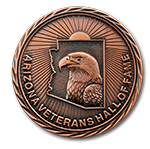Public Information
| Name | Barnes, William Croft |
| Class | 2013 |
| Biography | (1858-1936) William Croft Barnes was born at San Francisco, California on June 21, 1858. He earned the Medal of Honor while serving in the Signal Corps at Fort Apache, Arizona, on September 11, 1881 during the Indian Wars. Between 1873 and 1883, the Signal Corps constructed some eight thousand miles of pole lines connecting seventy-seven frontier forts and offices. There were three distinct Signal Corps telegraph systems that played a critical role in the Indian Wars and the final expansion of the continental United States to its Pacific border. It was at the isolated Fort Apache that first-class Private Will Croft Barnes honored himself and the Signal Corps as a recipient of the Medal of Honor. Barnes’ daily route consisted of using the electric telegraph to dispatch administrative messages, collecting meteorological data in order to transmit reports to the Signal Office in Washington and repairing his equipment and pole line. This latter task became increasingly frequent, as the Apaches grew restless in 1881. Barnes recollected in his book “Apaches and Longhorns” that the situation grew tense in 1881, when a medicine man called “Nock-aye-de-Klinny” predicted the departure of the white man and the Indian’s return to power. After Nock-aye-de-Klinny convinced the local tribe that he had a magic shirt that protected him from the white man’s bullets, trouble began in earnest. General Carr, Fort Apache’s commander, was then ordered to arrest the medicine man. Taking his troops, Carr set out to capture him. In an attempt to quell the fear of imminent Indian attack among those who remained behind at the fort, Barnes volunteered to climb the two-thousand-foot height of a nearby mesa and use his Signal Flags to alert the post to Indian movements. Although the details are minimal we do know that during a skirmish on September 11, 1881, Will Croft Barnes brought lasting recognition to himself and to the Signal Corps by displaying bravery in action against the Apaches; thus becoming the recipient of the Medal of Honor. Upon leaving the Signal Corps, Sergeant Barnes became a cattleman in Holbrook, Arizona; served in Arizona’s Territorial Legislative Assembly where he helped in the creation of Navajo County; and he wrote many books, including Arizona Place Names, which is still in print today. Starting in 1907, while he was with the US Forest Service, Barnes developed and preserved grazing lands for the State of Arizona. He retired from government service in 1930. The Barnes Hall Army Reserve Training Center; Barnes Butte and Barnes Field House at Fort Huachuca; are named in Barnes’ honor. |
| Medal of Honor Recipient | Yes |
